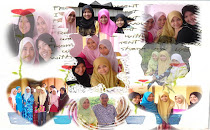For this third posting, I had to go to the online journal at Perpustakaan Tun Sri Lanang in order to search for the online databases. I decided to choose the topic on the impact of ICT on business for my third posting. Below are some of the necessary details and information on this topic.
According to the online journal entitle ‘Integrating Local and Global Knowledge through ICT- implication for Rural Business and Development. By: Anand, Sandip; Parashar, Vinayak. IIMB Management Review, Mar2006, Vol. 18 Issue 1, p85-93, 9p; (AN 20388367), ICT are designed to strengthen this capacity for development. This online journal is mainly focusing on the impact of the interaction between global and local knowledge. Besides that, it also tries to understand the role of ICT in the process of integration.
Overall, the impact of ICT in business is mainly effected the life of the farmers and the fisherman’s as it helped in the processing of the material in transactions to buy or sale livestock as well as in payment to them and in massive saving in time. Apart from that, it also enables communication of information like the weather forecasts, market price quotes, advice on farming practices and specific training to the farmers and fisherman’s. They can get this information through the internet or from the fixed or mobile telephone. Apart from that, with ICT the troubles of lack of transport infrastructure are not a problem anymore because ICT invention can help in overcoming these barriers.
Bill Barton12 said that the internet can make significant impact on agricultural distribution channels in three ways. Firstly, it brings greater transparency to market since it is easier to share information. Secondly, with internet access, the price can be posted on auction sites and lastly, it can lead to inventory visibility and affects the industry structure.
Development and Resource Poor Farmers
An analysis of Habermas’s critical theory by Fritjof Capra18 indicates that emancipation happens whenever people are able to overcome past restrictions that resulted from distorted communication, and ITC has been successful in removing those distortions. Evidence suggests, not surprisingly, that richer farmers and fishermen as well as middlemen are faster adopters of such technologies, but falling access costs through innovation, such as those of the IIT-Madras group (Telenet) should broaden information access and its benefits. Though the eChoupal model has been able to increase the prosperity of villagers, it may be important to understand which sections of rural society it has impacted. Is it the small farmer, the middle level farmer or large farmers who have been impacted positively by it? We need to understand whether the profile of ITC eChoupal’s suppliers as well as customers is homogeneous; if not what is the nature of its heterogeneity? In the long run will the eChoupal model create inequality in the village or will it lead to equality of opportunities? Will the gap between the rich and the poor increase or decrease?
An understanding of the gap in the distribution of newly generated wealth is essential for corporate houses as it informs the key business players and competition about the potential of various products and services in villages. Further, it also needs to be explored how ITC with its well established electronic and human network could include resource poor farmers, develop knowledge linkages with them and adopt native capability building. The current business model seems to be evolving towards a holistic model where knowledge linkages could be established with the resource poor farmers. However, its relationship with farmers has to be further grounded in the social space which includes resource poor farmers who represent a system of knowledge and wisdom. This has to be done by building social contracts. Such social contracts are likely to create business relationships which are more contextual and embedded in local cultural systems. Because of their evolution from their own roots, they carry varieties of information with them. Their traditional knowledge also brings many ‘tools and techniques’ from local memory, as well as cultural aspects. The cultural memory interacts with digital memory and that interaction is likely to strengthen the knowledge base of organizations. Plurality of health education, particularly HIV/AIDS awareness.
However, the planning and implementation of e-hubs and kiosks require in-depth understanding of rural India and its ability for e-learning. ITC’s experience suggests that e-learning may not be directly correlated with the formal literacy level of villagers. The ITC e-hubs could be further studied and analyzed from the training point of view to throw light on the challenges in the area of e-learning. Further exploration is required of the symbols of information sharing, such as the platforms that can be used for learning apart from the choupal. Understanding the factors affecting the synergy between local knowledge and global knowledge is likely to be helpful. In the context of learning and knowledge, areas of memory need to be explored to understand what forms the basis of local and global memory.
These experiments in the twenty-first century, particularly in the context of rural India, have created demand for innovations for business enterprises. There is great potential for innovation in the area of mobile and internet technology. However, those innovations have to be triggered within communities to embed them in the local context. Needless to say, this demands openness and willingness on the part of all stakeholders viz. the community, business enterprises, IT firms, government and policy makers, and also makes heavy demands on basic infrastructure, such as power.
In conclusion, ICT brings a lot of good and beneficial impact to the business industry especially to the life of the farmers, fishermen and the agricultural sector as it is focusing on the rural business and development.
Besides that, this journal also tries to understand the role of ICT in the process of integration. Below are examples of the differences between knowledge, ICT and business in the context of the network society:
Visvanathan1, referring to Castells’s work, argues that there is no single form of knowledge, but a variety of knowledge existing across the world. Visvanathan contends that to define knowledge as formal and abstract able is to impoverish knowledge and deny the existence of tacit, embodied and alternative knowledge. His intention is not to negate the importance of abstract able knowledge but to emphasize the importance of sensory or intuitive knowledge. Sensory or intuitive knowledge evolves in one’s life through encounters with information which one processes in order to adapt, heal and renew.
Van der velden5 further argues that designs strengthening a community’s capacity for self-organisation help to cultivate the diversity of the knowledge found in that community. ICT designs are required to strengthen this capacity for development. Centralised systems provide efficient consistency and quality control in the global context, but lack effectiveness when it comes to adaptation to local contexts. Centralised systems lack sharing of information in local formats and languages or connectivity with existing local media such as radio. Further, centralized knowledge-sharing systems are designed for the discussion and transfer of codified explicit knowledge or information6. Diversity does not refer only to plurality of expressions of explicit knowledge, but more importantly to different ways of knowing. ICT-based systems for knowledge sharing both for corporate as well as development programmes need to embed diversity, self-organisation, and the understanding of knowledge as situated and gendered, in order to support the cultivation of diversity and the self-organising capacity of knowers7. The above debate between local and global knowledge and development has started gaining prominence in organizational strategy.
Stuart L Hart8 argues that multi-national corporations must combine their technology and global reach with in depth understanding of local knowledge. The combination of local and global knowledge requires the development of native capability, a strategy that is well illustrated by Honey Care Africa. A partnership between three constitutive sectors, it harnesses the private sector’s marketing prowess, the development sector’s social capital and microfinance expertise, and the local community’s entrepreneurial spirit. Replacing the earlier crude technology to produce honey, Honey Care makes advanced, yet context specific beekeeping equipment available to small farmers. It procures and sells all of the equipment required to establish a beekeeping enterprise to a development sector partner. In turn, the development sector organisation capitalizes upon its local social capital to provide microcredit financing to small farmers for the purchase of the equipment. Honey Care deducts a designated percentage of their earnings and uses it to repay the farmers’ loans. It thus ensures microfinance loan returns and guaranteed earnings. Honey Care is today the largest producer of high-quality honey in East Africa and has been able to promote sustainable community development, building on native capability and local knowledge related to harvesting and producing honey9.
Native capability building seems to be emerging as a successful business strategy. The strategy is built on the fact that business expansion has not only to take the needs of the communities into account but also the local context, in that it has to go beyond mere integration of the local context and create synergy with it. While global knowledge has to be embedded in the communities, it also has to assimilate the context. The localized knowledge and traditional wisdom of the communities while transforming global knowledge is also likely to undergo metamorphosis and create constant interaction as seen in the OKN and Honey Care contexts.
The synergy has a dual advantage. By strengthening native capabilities, it enhances the purchasing power of the communities. It also generates trust by providing them with a sense of care. At the same time, it creates the market for business expansion. This expanded market cannot be seen as any other mass market, because it does not seek only one point or a few points of interaction with the consumer, but as a market that is created by the company and the community together. It is an exercise in collaboration rather than competition. Collaboration demands sharing of resources and knowledge, and that can be facilitated by ICT. Native capability enhancement through incorporation of local knowledge in plural forms is likely to bring benefits to business enterprises as well as communities. However, it demands facilitation by the government and policy makers. Such collaboration between organizations and communities is likely to provide the genesis for meta-organizations, as exemplified by the interaction between ITC and the agrarian community. Meta-organizations, where communities have become an extended part of the business enterprise and are no longer part of the external environment, are the way organizations are headed in the future and the government and its policy need to facilitate this symbiotic relationship between organisation and community. At the same time, the government also needs to take preventive measures against the pitfalls of collaboration, which could be done through enhanced transparency created by ICT, as exemplified by OKN. In addition, such experiments have to be extended in the context of other services like health and education and may demand collaboration among business enterprises, communities, government and development agencies, facilitated through ICT. ( Ibid3 )
REFERENCE AND NOTES
1 Visvanathan, Shiv, 2001, ‘Knowledge and Information in a
Network Society’, Seminar, July, p. 503.
2 Van der Velden, M, 2005, ‘Programming for Cognitive
Justice — Towards an Ethical Framework for Democratic
Code’, Interacting with Computers, Vol. 17, pp. 105 –120.
3 Ibid.
5 Van der Velden, ‘Programming for Cognitive Justice …’
8 Hart, Stuart L, and T London, 2005, ‘Developing Native
Capability: What Multinational Corporations Can Learn from
the Base of the Pyramid’, Stanford Social Innovation Review,
Summer.
12 Barton, Bill, 2003, ‘The Internet’s Impact on Agricultural
Input Distribution Channels’, Review of Agricultural
Economics, Vol. 25, No. 1, pp. 14-21.
18 Capra, F, 2003, The Hidden Connections, Flamingo, London,
p. 69.














2 comments:
good review but too short. How about other references? so far you only qouted 1 source and that is not adequate. However I hope that you will get some information on how ict can actually help our farmers.
That was only my first draft..i've already edited my work and add more relevant points and references.
Post a Comment